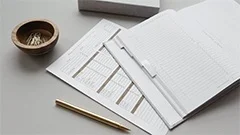Introduction
Bone tissue, also known as osseous tissue, is a specialized type of connective tissue that plays a crucial role in the support and protection of various organisms, ranging from vertebrates to some invertebrates. This comprehensive guide aims to provide an in-depth exploration of bone tissue, its structure, function, development, and response to injury or disease.
The Importance of Bone Tissue
Bone tissue is the primary structural component of the skeletal system, which provides support, shape, and protection for various organs and tissues within an organism's body. It also serves as a storage site for minerals, particularly calcium and phosphorus. Furthermore, bone tissue plays a role in hematopoiesis (blood cell production) during fetal development.
The Types of Bone Tissue
Bone tissue can be classified into two main types: compact and spongy bone. Each type has unique characteristics that contribute to the overall function and integrity of the skeletal system.
Compact Bone
Compact bone is dense, hard, and forms the outer layer of bones. It consists of osteons (Haversian systems), which are cylindrical units arranged in parallel and surrounded by a thick layer of compact bone known as the periosteum. Osteons contain a central canal (Haversian canal) that houses blood vessels, nerves, and lymphatic vessels. The matrix of compact bone is primarily composed of collagen fibers embedded in mineral salts such as hydroxyapatite.
Spongy Bone
Spongy bone, also known as cancellous or trabecular bone, is less dense than compact bone. It has a honeycomb-like structure with numerous cavities filled with marrow and connected by thin trabeculae (rods). The cavities in spongy bone provide spaces for the storage of minerals, blood cell production, and potential growth.
Bone Formation and Development
Bone development begins during embryonic development when mesenchymal cells differentiate into osteoblasts, which secrete an extracellular matrix that eventually hardens to form bone tissue. This process is known as ossification.
There are two main types of ossification: intramembranous and endochondral ossification.
Intramembranous Ossification
Intramembranous ossification occurs in flat bones such as the skull, mandible, and clavicle. During this process, mesenchymal cells differentiate directly into osteoblasts without forming cartilage first. The osteoblasts then secrete an extracellular matrix that hardens to form bone tissue.
Endochondral Ossification
Endochondral ossification occurs in long bones such as the femur and humerus. During this process, mesenchymal cells differentiate into chondroblasts, which secrete a cartilage matrix. This cartilage template is then gradually replaced by bone tissue through the action of osteoblasts.
Bone Remodeling and Repair
Bone tissue is constantly undergoing remodeling as old bone is resorbed by osteoclasts and new bone is laid down by osteoblasts. This process allows bones to adapt to changes in mechanical stress and helps maintain the overall health of the skeletal system. In response to injury or disease, bone tissue can also repair itself through a process known as fracture healing.
Conclusion
Understanding bone tissue is essential for comprehending the complexities of the skeletal system and its role in maintaining overall body function. This guide has provided an overview of the structure, function, development, and remodeling of bone tissue, providing a foundation for further exploration in this fascinating field of study.
MCQ: Test your knowledge!
Do you think you know everything about this course? Don't fall into the traps, train with MCQs! eBiologie has hundreds of questions to help you master this subject.
To go further...
These courses might interest you
Create a free account to receive courses, MCQs, and advice to succeed in your studies!
eBiologie offers several eBooks containing MCQ series (5 booklets available free for each subscriber).







